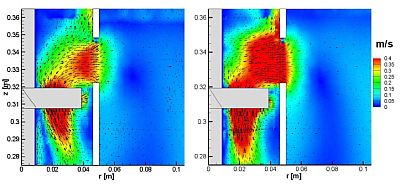
Design and Optimization of bioreactors for hydrogen production by computational fluid dynamics
Montante Giuseppina - Università di Bologna (Italy)
Coroneo Mirella - Università di Bologna (Italy)
Francesconi Javier A. - Università di Bologna (Italy)
Paglianti Alessandro - Università di Bologna (Italy)
Magelli Franco - Università di Bologna (Italy)

PRESENTATION
Abstract
The production of hydrogen by biomass fermentation is very promising for the replacement of fossil fuels by a sustainable and environmental friendly approach and it offers a great potential for the reduction of the H2 production energy requirement with respect to the chemical and electrochemical methods. For moving towards the technological application, beside the biochemical and microbiological issues, the engineering aspects, which mainly concern the bioreactor design and the selection of the operating conditions, are of crucial importance. These latter aspects have been less extensively investigated with respect to the former, although in the past few years significant efforts have been devoted to the study of the microbial conversion of organic substrates to bioenergy. Recently, Computational Fluid Dynamics has been identified as a viable approach to the design and the scale-up of bio-hydrogen reactors, which are still mainly based on semi-empirical and trial and error approaches.
The bio-hydrogen production process is affected by a number of critical factors, including mixing, H2 partial pressure, medium composition, pH and temperature; in order to provide appropriate conditions mechanical agitation is often selected. In this work, an innovative stirred bioreactor for the hydrogen fermentation of organic wastes is modelled by a CFD simulation strategy based on the Reynolds averaged Navier-Stokes equations coupled with a suitable two-phase turbulence model in the realm of the Eulerian-Eulerian two phase model formulation implemented in ANSYS Fluent. The bioreactor works under gas-liquid condition, since H2 stripping is adopted for improving efficiency. In order to isolate the numerical uncertainties associated with the complexity of the computational domain, the results of preliminary single phase simulations are compared with liquid velocity data collected by Particle Image Velocimetry. Afterwards, the capability of the computational approach to predict the two phase flow hydrodynamics is evaluated and the overall strategy for the full simulation of the bio-hydrogen production is outlined. The advantage of adopting the CFD simulation method proposed in this work for the optimization and the scale up of the bioreactor for the H2 production is discussed through a critical analysis of the prediction results.
